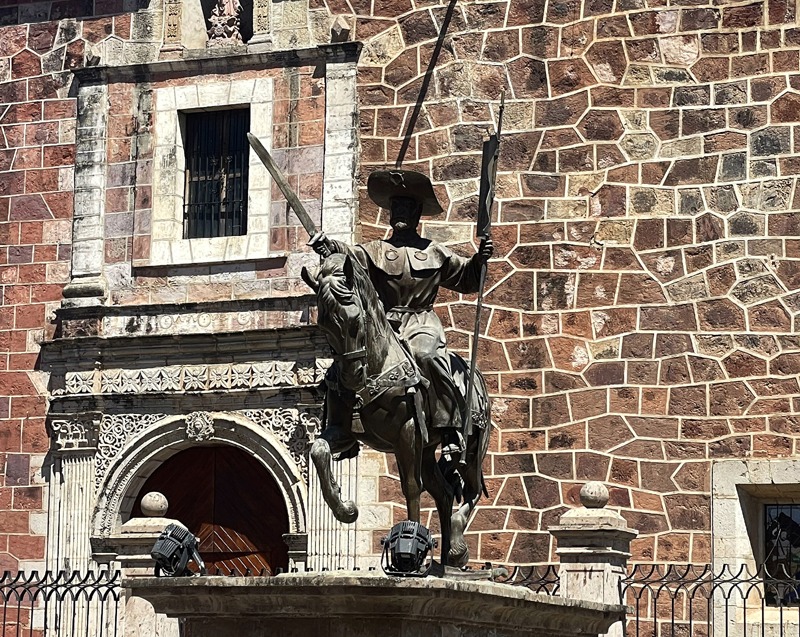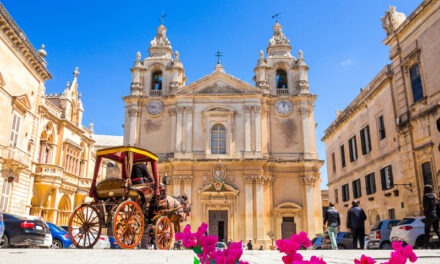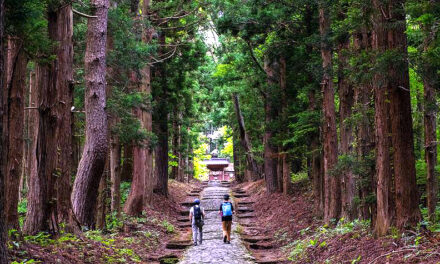Mexico
Savor the Flavors of Nayarit, Mexico: Tepic, Ixtlan del Río, and Compostela
Article and photography by Steve Gillick
“You need to taste the destination”. This was the flavorsome advice from Marco Valdivia, the affable Executive Chef/Owner of Emiliano Restaurant in Tepic, Nayarit, Mexico. “Eat the food that local people eat in Nayarit”. As a native of the state, Marco added, “When I am preparing dishes, I remember my culture and my family,” and he noted that “local” was the watchword in Nayarit cooking: Red and White wines and Tequila from Nayarit, fish and seafood directly from the Pacific Ocean off the coast, and vegetables, legumes, and spices from the restaurant’s own garden. As a ripe-off-the-vine kitchen comment, Marco revealed, “I knew this tomato before it was even born!”
True to Marco’s passion, it’s no wonder that Emiliano is amongst the top 120 restaurants in the country, according to the Gaia México Gastronomico. Our special dining menu celebrated Gala Nayarit, the annual tourism promotion for Riviera Nayarit and Puerto Vallarta. Sumptuous dishes began with the Amuse Bouche of Crab meatballs and Morita chili Mayonnaise, followed by Aguachile, kissed with jalapeno and plantain, under a shrimp, pineapple, and ginger sauce. The dish was prepared by Chef Salvador Munoz Miralrio from Vayami Restaurant in Tepic and had won ‘Innovative Dish of the Year’ in the category of ‘Nayarit’s Avant-Garde Flavor’ at the 2024 México Desconocido Awards. He explained that “the best way to understand Nayarit is to savor the flavors, and the best way to understand the history and culture of Nayarit is to speak to locals in the towns and villages”, a sentiment echoed by Chef Angel Alvarez of Magic Gourmet when he said, “people who eat local ingredients want to return to the destination because they feel it’s safe and comfortable”.
Our repast at Emeliano continued with Acaponeta pork taco (named after the Nayarit town), an exceptional main course of Zarandeado sea bass (a traditional method of grilling fish that originated in Nayarit), and an addictive dessert: A cottage cheese tart with a pumpkin seed cookie, garnished with green mango cajeta and mezcal ice cream.
In another conversation, vintner Gilberto Gangoiti Vermudez waxed enthusiastic about Nayarit wines, including the delicious 2023 Syrah, a Silver Award winner from Vino Meseta del Cielo. Gilberto recounted that Nayarit started making fruit wines (passion fruit, hibiscus, etc.) ten years ago but was now producing noteworthy Malbec, Grenache, Shiraz, Syrah, Macabeo, Merlot, and Pinot Noir.
Tepic, a city founded in 1531, is the capital of Nayarit State. At sunrise and sunset, the red glow of the surrounding Sierra Madre Occidental Mountains can be spellbinding. We stayed at the 4-Star Hotel Fray Junipero Serra in Centro Historico. To our left was the Main Square, with historical statues and monuments, food vendors, and shady trees resonating with the “kwirr-kwirr” calls of Gila Woodpeckers. Directly across the road was the 19th-century Neo-Gothic Immaculate Conception Cathedral.
Further north was the dramatic CAIN structure – The City of Indigenous Arts of Nayarit – designed by Estudio MMX. The Gallery supports the artistic traditions of the Cora, Huichol, Tepehuan, and Nahuatl-speaking Mexicaneros communities. CAIN lies beside the Mololoa River, a tributary of the Rio Grande de Santiago. Morning postcard-perfect scenery showcases lush greenery, distant misty mountains, and an impressive variety of bird species, including Egrets, Great Kiskadees, Tropical Kingbirds, and flocks of Black-necked Stilts.
A short walk south of the hotel, past the bright pink colonial building housing the Regional Museum of Nayarit, leads to the Tepic city sign with the picturesque Palacio de Gobierno and the mountains as a backdrop.
Bellavista is a quiet Tepic neighborhood of cobblestone streets, wall murals depicting historical scenes, and the 19th-century textile factory building. Around the corner is Los Telares de Bellavista restaurant, with a colorful crafts display. Breakfast featured a delectable Shrimp and Cheese omelet with Frijole, Salad, Salsa, and rich-tasting Arabica coffee from the municipality of Xalisco.
About one-hour southeast of Tepic lies Ixtlán del Rio, one of Nayarit’s nine Magical Towns. “Ixtlán” is a Nahuatl word meaning ‘the place where obsidian abounds’. The archeological site of Los Toriles, just outside of the town center, is one of Mexico’s most significant historical venues. It dates back to the pre-Columbian settlement of the Cora people, also known as Náayari, from which “Nayarit” is derived.
The once-fertile valley rested under a big sky surrounded by volcanic mountains, and in this mystical setting that highlighted the connection between the earth and the sky, the agrarian population was witness to the activities of the gods. The site is associated with the birth of the Aztec culture through the unification of seven indigenous groups by the god Quetzalcoatl.
The circular building known as “Ehécatl-Quetzalcóatl” stands out amongst the alters, stairs, and plazas. The name honored the importance and role of the wind god, who brought rain, affected weather, and symbolized life and death. ‘Cross’ shapes around the building represented the four cardinal directions (North, South, East, and West) and the four elements (Earth, Water, Air, and Fire) with which Ehécatl was associated. The Spring Solstice Ceremony sees about 1000 visitors honoring the culture and traditions of Los Toriles.
After our tour in the hot sun, a visit to the Quinta Ruiz ice cream shop in the town of Ixtlán del Río was refreshing. Here, the chilled sweet flavors of vanilla, lemon, strawberry, and mango are traditionally made by hand-churning the mixture in a bowl inside a wooden barrel.
But even more revitalizing was a visit to Casa Real de Ixtlán, one of Nayarit’s premier Tequila producers. Oscar Degadillo, the Director General, gave us a tour of the Agave fields, the cooking, milling, fermentation, distillation, and storage facilities…and a formal tasting of the three varieties: Reposado, Cristalino, and Plata.
We followed the Tequila-sensory protocol of 1) visual validation of the clarity of the Tequila. 2) tipping the glass to confirm that the tears fell within six seconds. 3) using the nose to determine the aroma; the scent of agave, green grass, citrus, chocolate, and more, and 4) experiencing the taste by taking a small sip to rinse the mouth, then a second sip, relax, breathe in, breathe out…and smile!
And the happiness spread along the route to Compostela, another captivating Magical Town. The name translates as “field of stars” and is associated with the legend of Saint James in Santiago de Compostela, Spain. The town has a beautiful central plaza displaying red, pink, and orange Bougainvillea, palm trees, a kiosk with the municipality’s history vividly painted on the inside of the dome, the historic Parish Church of Santiago Apostol, and the dynamic equestrian statue of St. James. Nearby, a lively market sells fruits, vegetables, and meat on the first floor, with gorditas, tacos, burritos, and other street foods for sale upstairs. Aside from tourism, the town boasts three main activities: coffee (there are more than 155 producers nearby), leather (shops line the main street), and a history dating back to 1532.
Each visit to Nayarit provides visitors with fascinating insights into history, culture, people, food, attractions, and nature. This is the perfect opportunity to savor the flavors of Nayarit and plant the desire to return.












